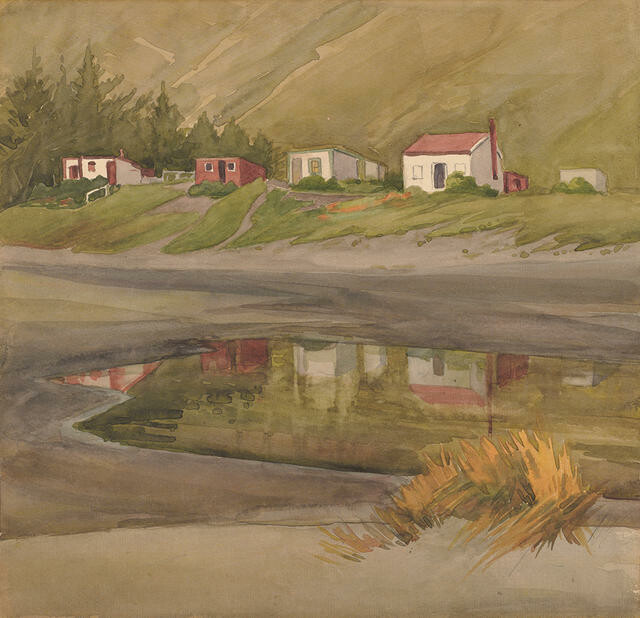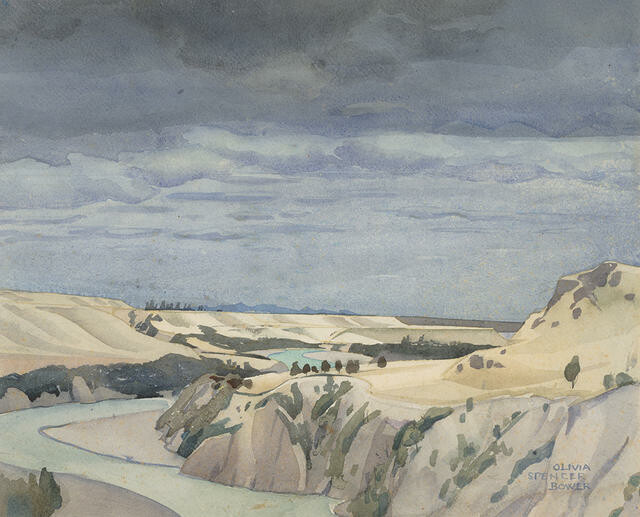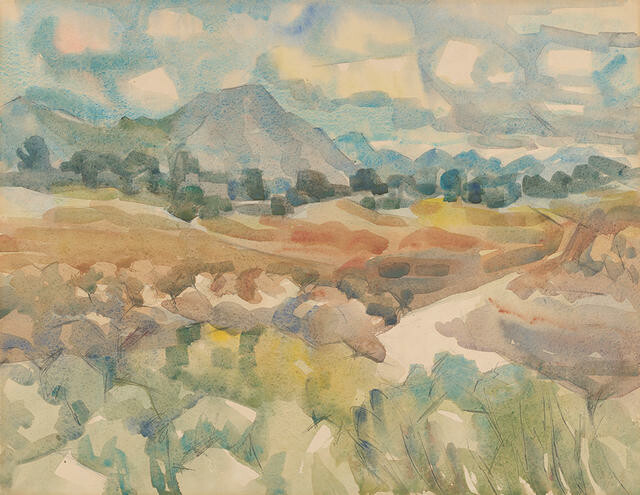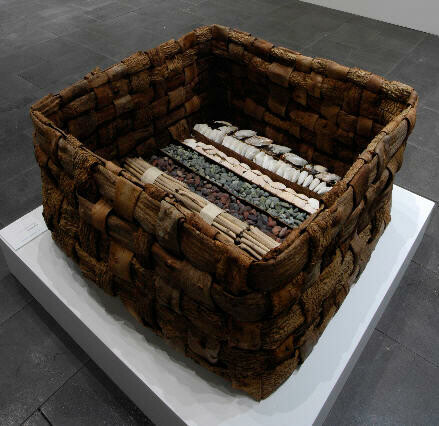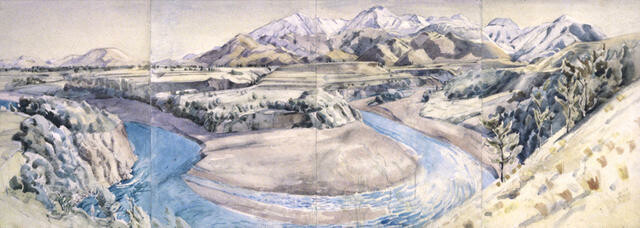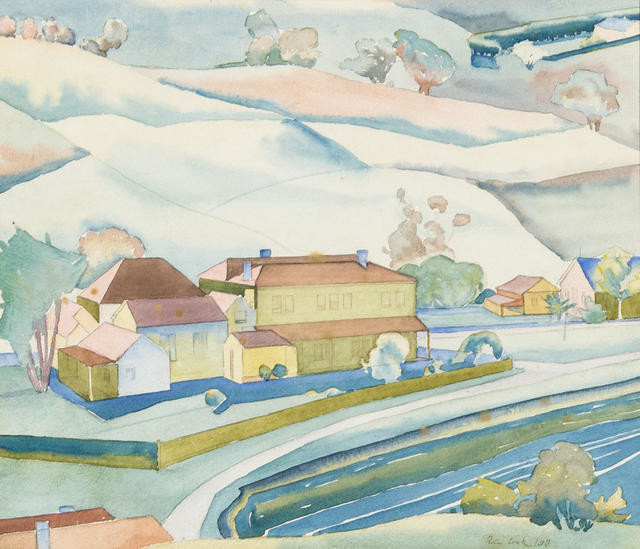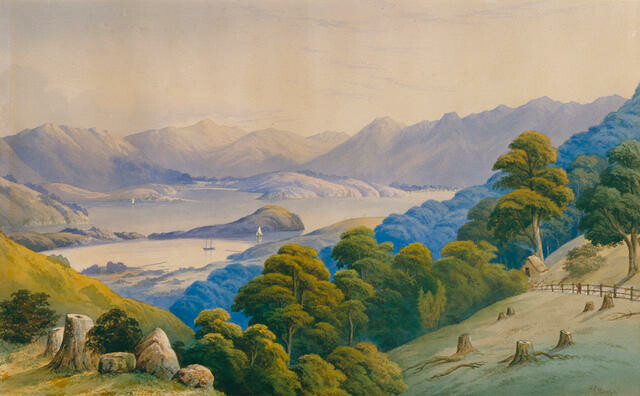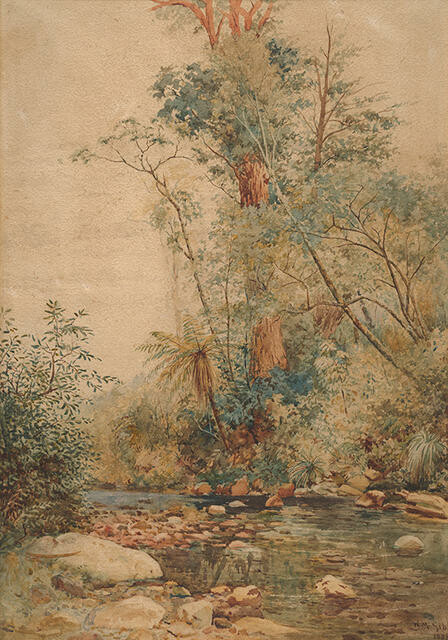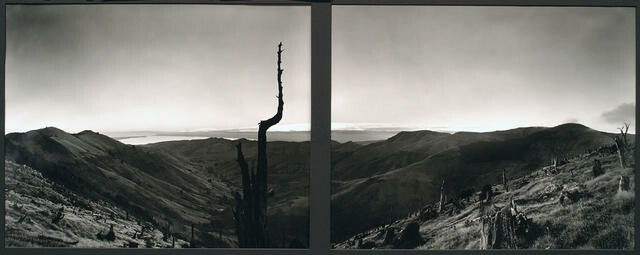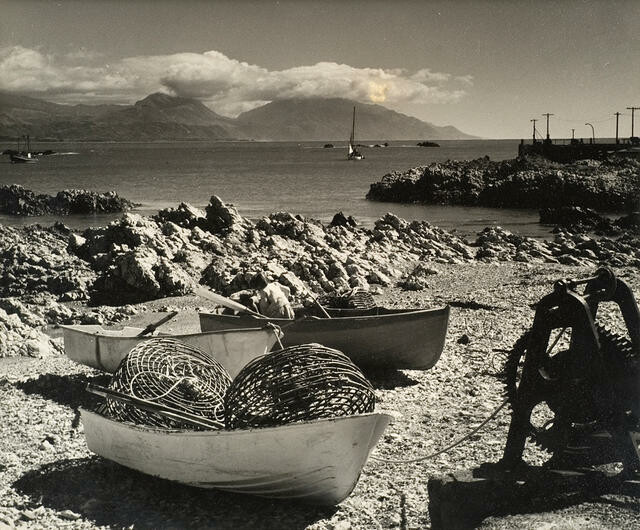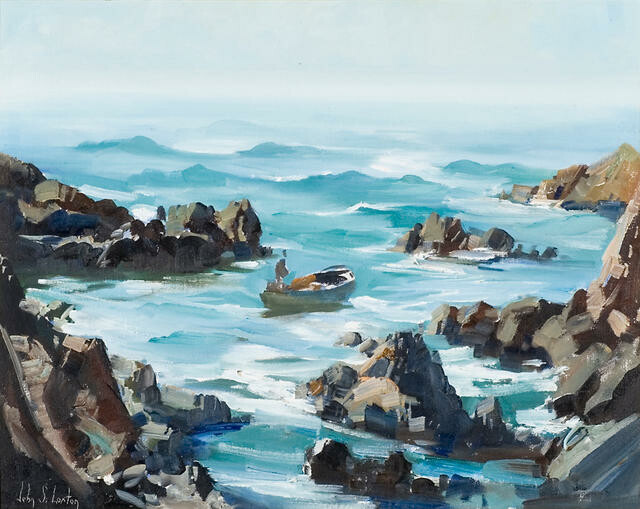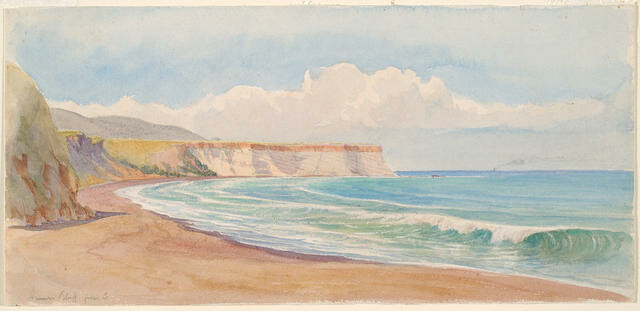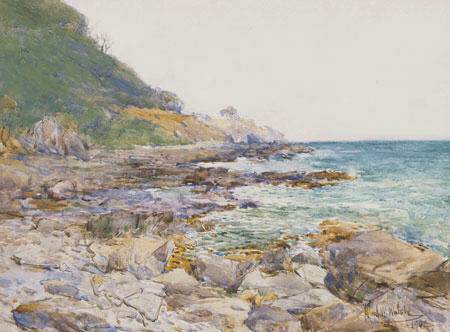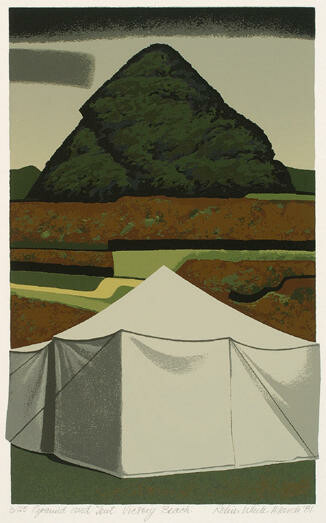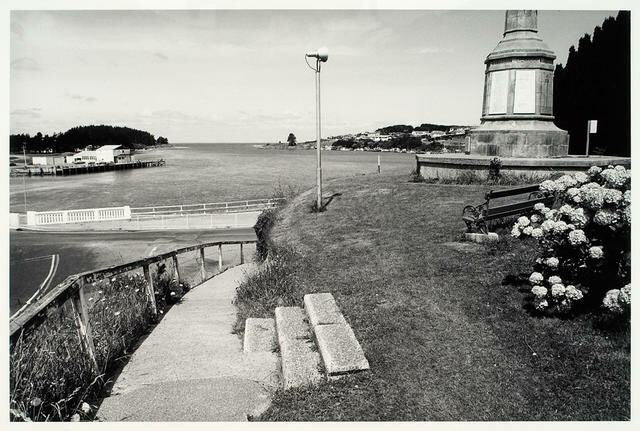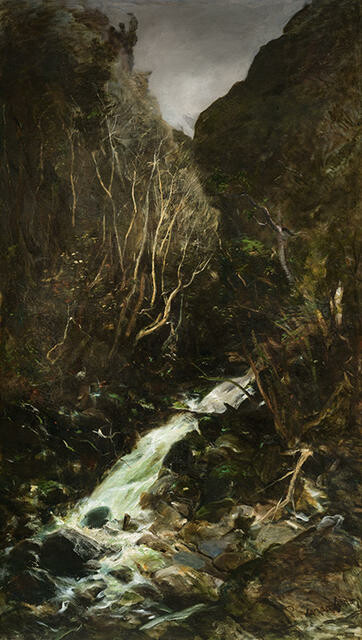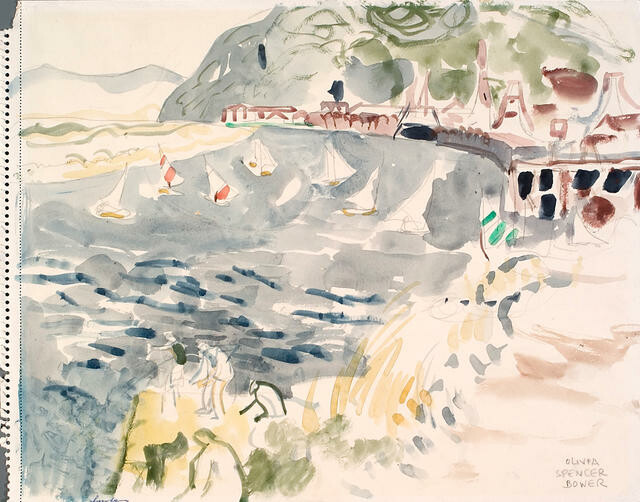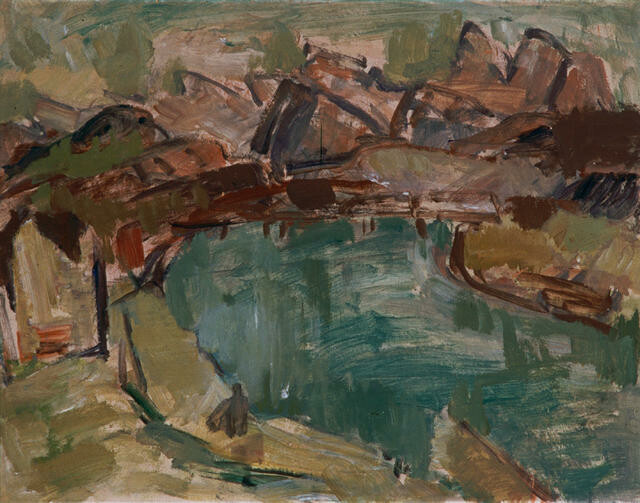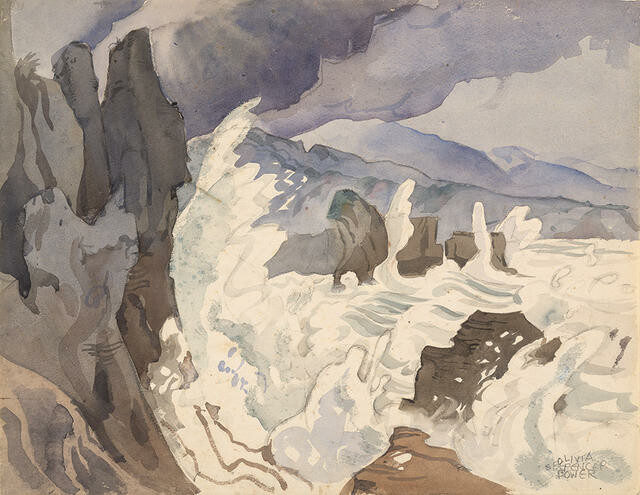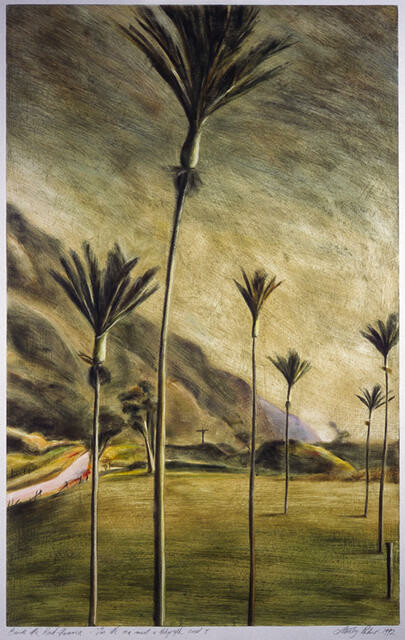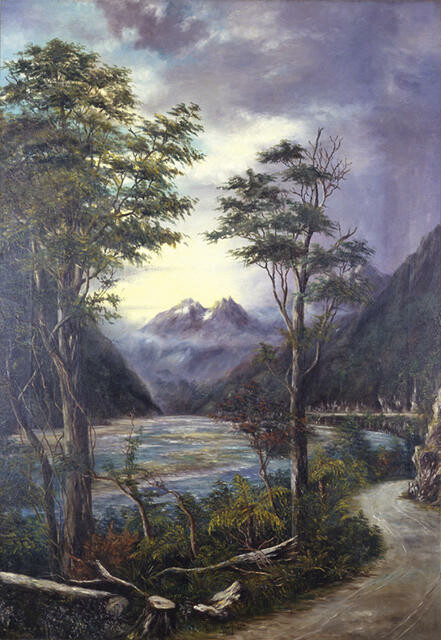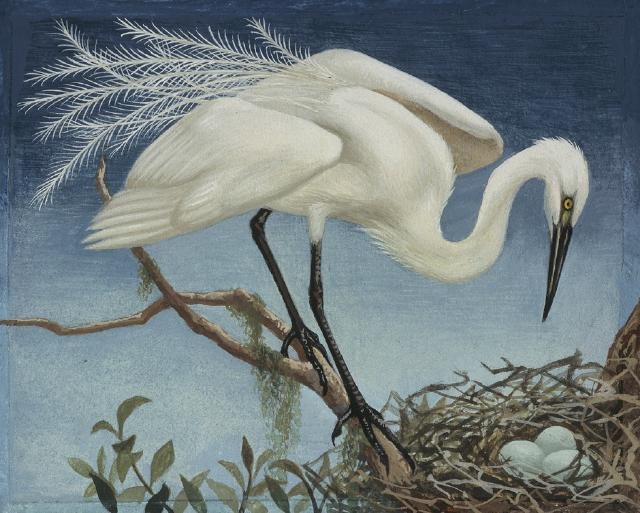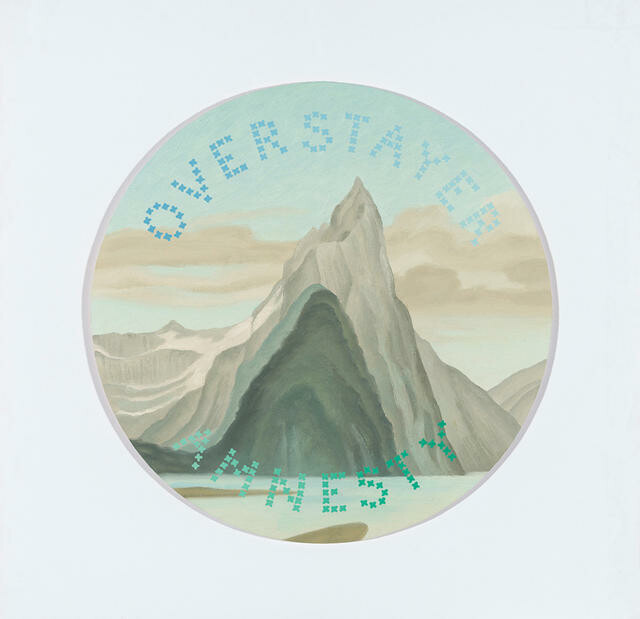East/West
By Chris Pole
Though there are many things Christchurch has to offer, one of the best things about living here is that it’s such a great middle ground to other places. There are many riches on offer in Te Wai Pounamu, from Farewell Spit to Bluff. But if that’s a North to South description, the one I’m most interested in is East to West; each coast completely different in climate, culture, and vibe, but whether gazing out on the Pacific or the Tasman, both coasts have a multitude of beaches and rivers to enjoy. Christchurch Art Gallery’s collection has a couple of holes if I want to represent all my favourites (the Northwest of Kahurangi National Park – particularly Mangarakau and the Paturau and Anatori rivers – are glaring omissions, so too the isolated but stunning Catlins region in the opposite corner of the South Island), but regardless there are some great artistic visions of some classic haunts.
EAST >
Let's stick close to home before branching further afield. Here's a few local hotspots I'm sure we're all familiar with - an embarrassing mistake by a chap named Taylor (our own Surfers - or is that nudists? - Paradise), some great Spencer Bower S-bends in the mighty Waimakariri, the view inland from Kairaki (or Pines Beach, beside the 'Mak rivermouth), and a collection of shells and suchlike from Waikuku beach-scourer Judy McIntosh-Wilson.
Of course it's not far to Banks Peninsula either. You'll pass Birdlings Flat and Kaituna valley on your way to Akaroa, though sadly the Duvauchelle's Pub is no more (R.I.P.), and of course there are a litany of bays on the eastern side, all with their own magic charms. Raupo and Hickory are both favourites with me (mainly because they have waves), or on days with no swell Okains and Little Akaloa are equally enticing. Though none have drawn the attention of the watercolour brigade (it was a lot harder to get to these places before the influx of Subaru Legacy's this millenium),a nice bush-scene from Pigeon Bay is duly present.
Further north lies Kaikoura, and if Christchurch's quakes aren't scary enough, imagine being in Kaiks if a tsunami hit! A super-deep trench lays just off the coast of Kaikoura, and the small town nestled at the base of the mountains wouldn't stand a chance against a tidal wave jacking up on the offshore sea shelf. Here, Edwyn Temple and Alfred Walsh (bet there's paua on those rocks) depict much calmer days just south of the peninsula, while Gopas captures the craypots which are a part of daily life in this bountiful region. Loxton hints at the wilder conditions the fishermen sometimes endure to bring home the catch. Still, if you've ever stopped on the roadside at Cay's Crays just north of Maungamanu, you'll know that the hard work is worth it.
Finally, any survey of the east coast wouldn't be complete without a trip down south. The Catlins may be missing, but Victory beach on the Otago Peninsula has a very similar feel - majestic, isolated, and rugged - and Riverton's about as far south as you can go (aside from Slope Point) before you're in Fouveax Straight.
If we're really talking rugged, though, then you can't go past the West Coast, and I don't just mean the beaches. There's some old-schoolers over there, hanging out with their nets in the rivers, pints in the pubs, and guns and beards in the hills. Stereotypical? Sure, but I say it all with affection. Coasters are a hardy breed, and all the more loveable for it. Still, for a Cantabrian to see one in the flesh, you'll have to travel through a pass, and though both Haast and Lewis are spectacular in their own rights, it's Otira in Arthur's Pass that's most captured the imagination of artists, none more so than Petrus. Pop out the other side and you'll hit Greymouth. The name says it all really, and I must admit I've never seen it look even vaguely the way Olivia Spencer Bower paints it here, all dappled light and sailboats! An hour or so south, and Toss manages a murky vision of Hokitika that's probably about right two-hundred-odd days a year.
WEST >
The Coast Road, nestled beneath the Paparoa Ranges between Greymouth and Westport, snakes along the Tasman Sea, with every bend in the road revealing another stunning vista. The beaches at Rapahoe, Fox River, and the Nile are all beyond impressive, and Charleston and Barrytown boast classic West Coast pubs. But if you're only going to make one stop along State Highway 6, then it's surely going to be at Punakaiki. Olivia Spencer Bower gives us contrasting views of the beach at the Punakaiki rivermouth while Marilyn Webb serves up the Pancake Rocks for which the region is so famous.
Head further north, past the seal colony at the aptly named Cape Foulwind, and through the small settlements of Granity and Mokihinui (where there are currently controversial plans to dam the river) and eventually you'll meet up with the sandflies in Karamea. Since Stanley Palmer's Nikau is a print rather than oil painting we can assume he didn't make it en-plein-air, so hopefully he managed to avoid the bloodsuckers. Palmer deserves a nod, for he has produced two large bodies of work - and accompanying books - one titled East, and the other West. Great idea that....
Finally, to do the coastline full justice we need to head south. The Taramakau river is just below Greymouth, and then it's a fair haul down to Okarito, near the glaciers. Okarito is a magic spot, and home to the White Heron, depicted here by Eileen Mayo. And of course it would be remiss not to include Milford Sound (the classic view of Mitre Peak looking from Freshwater Basin depicted here by Peter Ireland), a tourist magnet for good reason. All of these spots are scattered down a largely unpopulated part of New Zealand (indeed, there's barely more than 50,000 people on the entire coast), and while I've mentioned those that are depicted within the Christchurch Art Gallery collection, there are so many spots - from Lake Mathieson to the Truman Track to the Denniston mines - that are worth visiting along the way. It's lush, untamed, and unspoilt.
